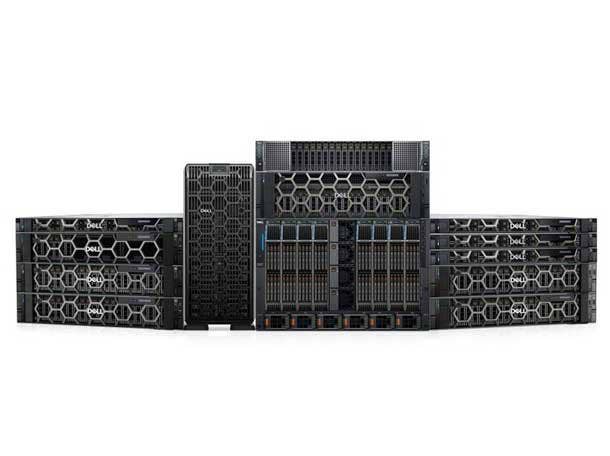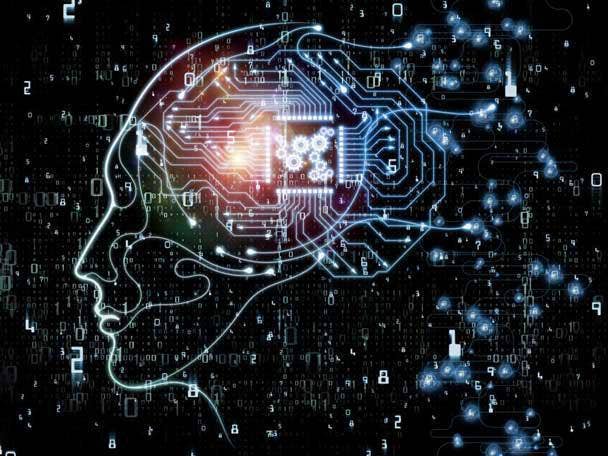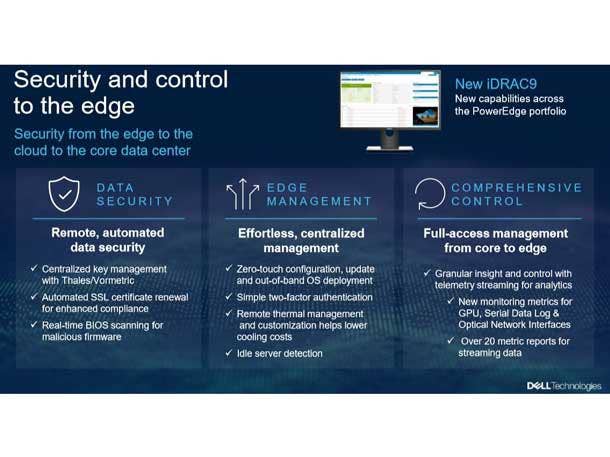Michael Dell: Tech ‘Built For AI First’ Will Dominate Computing
‘We should be thinking about and working right now on how we build our systems, first for machine intelligence, then for the other applications and uses out there,’ says Dell Technologies founder, chairman and CEO Michael Dell.

Dell Technologies Chairman and CEO Michael Dell said within a few years “machine intelligent systems” will be the primary consumer of the world’s IT computing power, adding that today the kind of performance those future systems need only exists in a lab.
“I would predict, in a few years, the majority of IT capacity is going to be in service of machine intelligent systems,” he said during a talk on Tuesday about Dell’s new line of PowerEdge servers. “That’s the only way you can make sense of the amount of data that is going to be created. What that means is that we should be thinking about and working right now on how we build our systems, first for machine intelligence, then for the other applications and uses out there.”
Dell said his company has such devices that can run 100-million IOPS, the input output of operations that measure a computer’s performance, but those devices are not yet on the market.
“We have systems in our labs that are two to three times faster than anything available. That’s the kind of performance that is going to be needed,” he said. ‘Building systems that are built for AI first is really inevitable, and it’s a huge opportunity for Dell and Nvidia to collaborate together.”
[RELATED: Dell’s New PowerEdge Servers Built for AI, Security, Sustainability]
The two companies have been working together for 25 years starting with the Dell Dimension, followed by the Dell Optiplex, Huang said.
“Now we are inventing the next generation of enterprise servers together,” he said. “I would say the next 10 years is where enterprises begin benefiting from artificial intelligence. The last 10 years we have made some giant breakthroughs in procession; in recognizing patterns and relationships, but the real industrius part about intelligence is really about production. It’s about generating words, generating images, generating content, creation.”
Dell and Huang were together to announce Dell’s new generation of PowerEdge servers, which leverage Intel’s 4th generation of Xeon scalable processors as well as Nvidia chips to accelerate performance across the network.
The server boosts AI inferencing by up to 2.9 times while also giving a 20 percent boost to the number of virtual desktop infrastructure users and a 50 percent boost to the number of SAP sales and distribution users on one server compared with earlier models.
Dell also can equip the server with Nvidia Bluefield-2 data processing units to provide additional offload acceleration. The servers are made for private, hybrid and multi-cloud deployments.
Here are five things to know about Dell’s new line of PowerEdge servers built with Intel’s 4th Generation Xeon Scalable processor:

Sustainability and Power
PowerEdge servers combines temperature monitors with intelligent controls that use Dell’s liquid cooling, and arrays of air movers to make more efficient energy decisions. The devices’ new motherboards use fewer RPMs, which reduces the amount of energy used and allows for denser deployments and a consolidated stack of hardware.
“All of this ensures a much-improved performance per watt and creates significant value for customers,” said Rajesh Pohani, Dell’s vice president of portfolio and product management for PowerEdge, HPC and core compute. “But with the upward trend of energy costs globally, and particularly significant increases in some parts of the world, customers are looking for better TCO (total costs of ownership) and ways to more granularly monitor manage and cap their power usage.”
He said paired with Dell’s automation and system management, the servers can analyze and prevent a server related power thermal event by analyzing historical and present power consumption, and temparature readings to best define power policy for the customer’s needs.

AI/ML Workloads
The new generation of PowerEdge servers are made to process AI and ML workloads, with more than 80 percent of this new portfolio of servers supporting discrete GPUs, and all of the devices supporting CPU-based AI. These are designed to meet the customer’s needs as more enterprises deploy sophisticated computing applications.
“We developed and are launching purpose-built portfolios for AI and ML workloads and products, optimized for CSP workloads. Bringing customers, the type of compute they need for the locations they need it.”
The new devices will drive value for customers who need power for training AI models, data analytics, and applications that build AI into their solutions.
On the new series of servers, AI inferencing is increased by up to 2.9-times. The devices also give a 20-percent boost to the number of virtual desktop infrastructure users and a 50 percent boost to the number of SAP sales and distribution users on one server compared with earlier models.

Security
Secure from the first part, Dell PowerEdge servers support every phase of the zero-trust environment, from build to deployment.
“Dell designs PowerEdge edge with security in mind at every phase in the server lifecycle,” said Pohani. “Dell cyber-resilient architecture is a layered approach consisting of a web of security solution elements designed to protect, detect and recover from threats.”
The PowerEdge line is built at the factory for zero-trust security environments. Dell said its enhanced component security verification system, offers customers the ability to cryptographically verify the parts made by the factory, match what was delivered to them.
The systems also protect data at rest and at use though enhanced designs and processes.
“For data at rest, data encryption, secure enterprise key manager allows PowerEdge customers to manage keys centrally for SEDs and PowerEdge servers and scales with storage capacity expansion,” he said. “For data in use, we have enabled confidential compute technologies embedded in the latest processors from Intel and AMD to ensure security.”
“Dell has enabled features withing PowerEdge to support adopting a zero trust strategy such a identity access management, multifactor authentication technologies to help secure access to management tools such as iDRAC.”

Integrated Dell Remote Access Controller – iDRAC9.
Integrated Dell Remote Access Controller: iDRAC delivers local and remote server administration. It’s an integrated consistent management platform across the PowerEdge products, with more than 180 discrete measurements.
The iDRAC9 controller gives admins the ability to manage 8,000 devices per instance. This can dramatically shrink the time it takes to deploy updates across a fleet of software products.
“One example of the benefits is in the area of firmware updates. Our open manage automation can reduce the time it takes by up to 99-percent by automating and eliminating the number of steps and manual intervention required.”

Partners Praise
Rick Gouin, CTO of Dell Platinum partner Winslow Technologies Group, told CRN the solution provider sees a big opportunity to market the security features of the new PowerEdge lineup, adding that it will be a “major talking point” with customers.
“We like the concept behind the SCV—supply chain verification—feature, as supply chain concerns have become a factor for us when discussing server and end-user compute devices,” Gouin told CRN. “The new SCV feature allows us to really push harder on that messaging as a way to provide customers with peace of mind and differentiate against some of the other competitors in the Intel server space. This feature will be a major talking point for us as we start to have conversations about this newest generation of PowerEdge servers.”